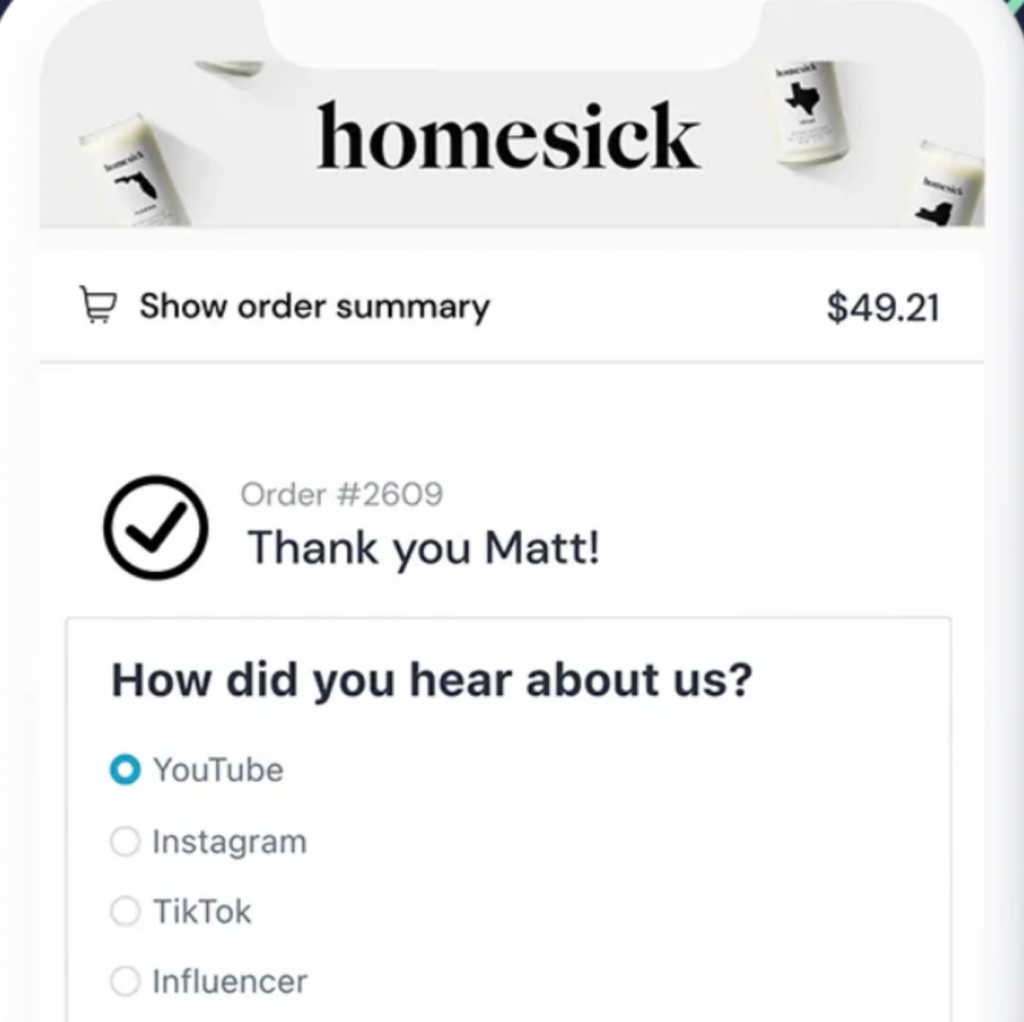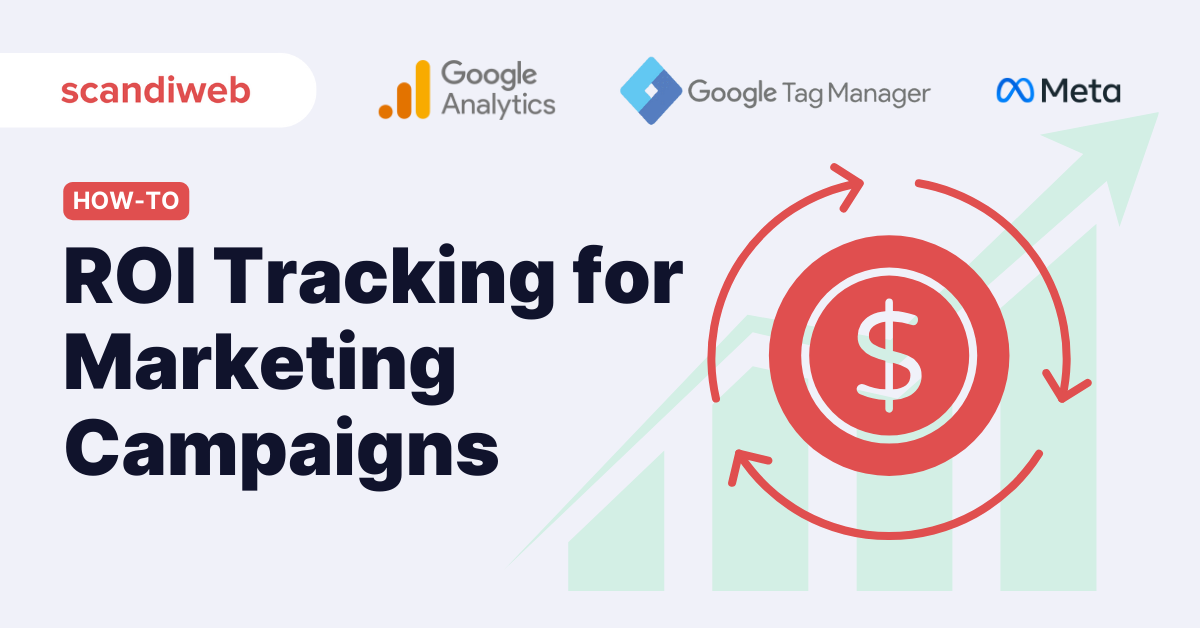Effective tracking provides insights into the success of your digital strategies and empowers you to optimize and refine your approach for better results. Traditional tracking methods may fall short in this era of advanced analytics and evolving consumer behavior.
Two core issues with having the whole picture for ROI calculations are the following:
- Data privacy regulations and cookie compliance, such as GDPR, that require user consent for tracking and can result in a 20-40% loss of data tracking capability to match marketing results to marketing spend
- Browsers and browser extensions blocking analytics hits are becoming more popular.
To navigate this, we explore five innovative ways to make ROI tracking for your marketing campaigns as precise as possible. Let’s delve into the intricacies and pros and cons of these techniques!
Here are five ways to enhance ROI tracking we’ve tried and can tell you all about:
- Send purchase data from the backend to Google Analytics 4 (GA4) via Measurement Protocol
- Gathering 1st party data on the checkout success page
- Move all events to server-side Google Tag Manager (GTM)
- Tackle iOS and Safari restrictions with Facebook conversion API via server-side GTM
- Integrate more advanced marketing attribution platforms
Option 1: Backend to GA4 via Measurement Protocol
The Google Analytics Measurement Protocol, a part of the GA4 toolkit, is a set of rules for sending and receiving data to and from GA4. This protocol empowers marketers and developers to take a more granular approach to data tracking, enabling the transmission of detailed information directly from the backend systems to the GA4 platform. By using this protocol, businesses can achieve more precise tracking of marketing ROI and gain deeper insights into user interactions and transactions.
PROS ✅
- Banklink order tracking—the ability to send purchase data from the backend directly to GA4; this ensures more precise tracking of marketing ROI and a more comprehensive and accurate representation of the complete customer journey
- Resolution of dataLayer issues with different payment methods on the order success page so businesses can maintain the integrity of their data, ensuring that all transactions are accurately attributed to the appropriate marketing channels
- Close to 100% match between orders and revenues—sending data directly from the backend allows for a close match between total orders and revenues recorded in GA4 and the backend
- Orders and refunds tracking—the Measurement Protocol facilitates the monitoring of refunds and sending refund data from the backend system directly to GA4, providing more precise data on actual revenues when refunds are deducted and evaluating which marketing channels drive purchases more likely to be refunded.
CONS ❌
- Limited tracking for GDPR and cookie blockers—despite its robust tracking capabilities, the Measurement Protocol is limited regarding users blocking cookies via GDPR pop-ups. While their orders are pushed to GA4, they’re not associated with a user ID or client ID (anonymous unique GA4 cookie for each browser), leading to potential gaps in tracking for this user segment
- Attribution challenges—when users do not have GA cookies stored in their session due to GDPR compliance or tracking blockers, it will cause an increase in orders attributed to the ‘direct/none’ channel instead of the actual source from where the user navigated to the eCommerce store
- GA4-specific solution—while effective for GA4, the Measurement Protocol is not a universal solution applicable to all other marketing platforms, e.g., data transmitted through this protocol won’t be visible in Meta Ads platform analytics.
In considering this option, businesses must weigh the benefits of precise tracking against the potential drawbacks, keeping in mind the specificities of their user base and the platforms used for marketing campaigns. The Measurement Protocol offers a powerful tool, but its implementation requires a thoughtful assessment of the trade-offs involved.
Option 2: Checkout success page
Recent browser policy changes, such as the Cookie Countdown initiated by Chrome, have pushed marketers to reevaluate their tracking methods. One alternative we recommend involves gathering first-party data about how customers found your brand directly on the checkout success page.

PROS ✅
- Direct data from customers—the primary advantage of collecting data on the checkout success page is the direct input from customers themselves provided voluntarily. First-party data obtained directly from customers is inherently more trustworthy
- Easy to interface—implementing data collection on the checkout success page is a straightforward process. You create a seamless user experience where customers can share information about how they discovered the business
- Showcasing the trend in customer acquisition—understanding the prevalent channels through which customers discover and choose to make a purchase provides valuable insights for refining marketing strategies.
CONS ❌
- Limited sample size—one of the main limitations of this approach is that the data sample is based on the number of customers who willingly submit the form on the success page, and this voluntary nature can result in a smaller sample size compared to other tracking methods
- Trustworthiness of data—upon completing a purchase, users can potentially click on one of the survey answers without putting thought into it, so this type of solution relies on customers actually reading the question and answering it truthfully, which not all people will do.
While gathering first-party data on the checkout success page, on paper, offers a direct and trustworthy source of information, you need to be mindful of the potential limitations of relying solely on voluntary or sometimes untrue customer submissions to help make informed marketing decisions.
Option 3: Server-side GTM
The integration of server-side GTM allows the transmission of backend orders to GA4 and extends its capabilities to include other events, such as add-to-carts and page views. Additionally, server-side GTM provides an opportunity to configure tracking in a way that addresses GDPR constraints discreetly.
PROS ✅
- Safari- & iOS 14-friendly—server-side GTM offers a solution to the tracking challenges posed by Safari and the iOS 14 update
- Reduced Ad Blocker impact—ad blockers have become commonplace, limiting the effectiveness of traditional tracking methods—server-side GTM processes data on the server, mitigating the chances of data loss due to client-side restrictions
- Improved page speed and reduced page load time—with server-side processing, the burden of tracking shifts away from the user’s device, resulting in improved page speed and reduced load times, which enhances user experience
- More control of the data—by processing and transmitting data from the server, businesses can implement tracking configurations in a more controlled and secure environment, ensuring the accuracy and integrity of the data collected
- Precise data—all data is transmitted to GA4 directly from the server, enhancing the tracking reliability.
CONS ❌
- More complex implementation and maintenance than other tracking methods—you’ll need to invest time and resources to set up and manage the server-side infrastructure effectively
- Traffic attribution challenges in GA4—shifting all events to the server side may introduce challenges in attributing traffic accurately within GA4
- Cost of provisioning GTM server in Google Cloud Platform—the financial investment required to maintain a dedicated server should be considered in the overall cost-benefit analysis.
Server-side GTM provides a sophisticated solution for overcoming challenges posed by certain platforms and offers a more holistic approach to data transmission and tracking. With this option, businesses must weigh the enhanced tracking capabilities against the implementation complexity and potential costs.
Option 4: Facebook conversion API via server-side GTM
Facebook Conversion API was created in response to the recent changes in iOS 14, which have made it more difficult to track conversions using traditional methods (browser-side cookies and scripts).
PROS ✅
- Accurate and reliable data—this approach ensures that the data about the performance of Facebook and Instagram ads is precise and reflects actual user interactions
- Precise data in Facebook dashboards—leveraging the conversion API ensures that the data transmitted aligns seamlessly with Facebook (Meta) dashboards, allowing marketers to make informed decisions.
CONS ❌
- Cost of provisioning GTM server in Google Cloud Platform (same as server-side GTM)
- Requires maintenance—regular upkeep and monitoring are essential to ensure the data transmission’s continued accuracy and effectiveness, adding a layer of responsibility.
While the benefits of precise data via Facebook Conversion API are evident, businesses must weigh these against the costs and maintenance requirements regarding the suitability of this approach within their marketing strategy.
Option 5: Advanced marketing attribution platforms
There are third-party platforms available, such as triplewhale.com and northbeam.io, that promise to have more precise attribution due to their specific algorithms focused on social media. However, relying on third-party platforms introduces an element of dependence, as changes or disruptions on their end can directly impact the accuracy and availability of attribution data.
Summary
The options explored above present innovative approaches to ensure as precise tracking as possible in our privacy-focused world. Keep in mind that these options are not mutually exclusive—they can be combined to create a robust tracking solution tailored to your business needs.
Need more information about implementing these tracking strategies? scandiweb’s Analytics team is happy to get on the call to discuss them in detail if any questions arise!



Share on: